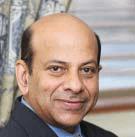How To Be A Three-Box Leader
By Vijay Govindarajan, Coxe Distinguished Professor, Dartmouth’s Tuck School of Business
 In a nutshell, the Three-Box Solution describes the framework for managing a business’s responsibility to take action in three time horizons at once: executing the present core business at peak efficiency (Box 1); taking steps to avoid the inhibiting traps of past success (Box 2); and innovating a future built on nonlinear ideas (Box 3). Leaders must understand the distinctive skills each box requires, how the boxes interrelate, and what it takes to balance them.
In a nutshell, the Three-Box Solution describes the framework for managing a business’s responsibility to take action in three time horizons at once: executing the present core business at peak efficiency (Box 1); taking steps to avoid the inhibiting traps of past success (Box 2); and innovating a future built on nonlinear ideas (Box 3). Leaders must understand the distinctive skills each box requires, how the boxes interrelate, and what it takes to balance them.
We now live in an era of almost constant change. First, new technologies continue to emerge at an ever-more rapid pace. Second, globalization brings with it new markets, new customers, nontraditional competitors, and new challenges. Third, the internet has created much greater transparency to any company’s strategy, actions, and performance. As a result of these forces, companies find that their strategies need almost constant redefinition either because the old assumptions are no longer valid, because the previous strategy has been imitated and neutralized by competitors, or because technological developments and globalization offer unanticipated opportunities. Rooted in these premises, the leadership challenge is: How to successfully create the future (Boxes 2 and 3) even while managing excellence in the present (Box 1).
Take the case of the automotive industry. In the early 20th century, Ford innovated the mass-market for automobiles with the Model T. The core competence of the automotive industry for the past 100 years has been mechanical engineering — designing engines and pistons. There are major nonlinear shifts impacting automobile companies: driverless cars, electric cars (e.g., Tesla), and sharing economy (e.g., Uber). Ford must continue to improve the efficiency of its Box 1 business (gasoline-powered automobiles) even while building new competencies in computer science, artificial intelligence, and robotics (Box 2 and Box 3 imperatives).
GE is another case in point. In the past 15 years, under Jeff Immelt’s leadership, GE has divested many businesses: insurance, NBC Universal, and more recently, finance. This is a Box 2 move. GE is transforming itself from industrial company to information company. GE’s products such as aircraft engines, CT scanners, and turbine engines generate lots of data that is useful for its customers. GE has set up a Digital Business Unit to create and capture value from this information using Big Data analytics. GE can sell the information products to its customers such as airline companies, hospitals, and utilities in order to improve their efficiency. This is a Box 3 move.
Specific leadership challenges of The Three Box Solution are:
- How do we identify the market discontinuities (e.g., fundamental shifts in technology, customers, competitors, lifestyle/demographics, globalization, regulations, etc.) that could transform our industry?
- How do we analyze the opportunities and risks, as a result of our understanding of market discontinuities?
- How can we create new growth platforms (Box 3) with a view to exploit the market discontinuities?
- How do we selectively forget the past (Box 2)?
- What new core competencies must we build to support growth platforms?
- How do we allocate resources to support growth?
- What kind of organizational DNA must we have in order to anticipate and respond to changes on a continual basis?
- How do we execute breakthrough innovation strategies?

